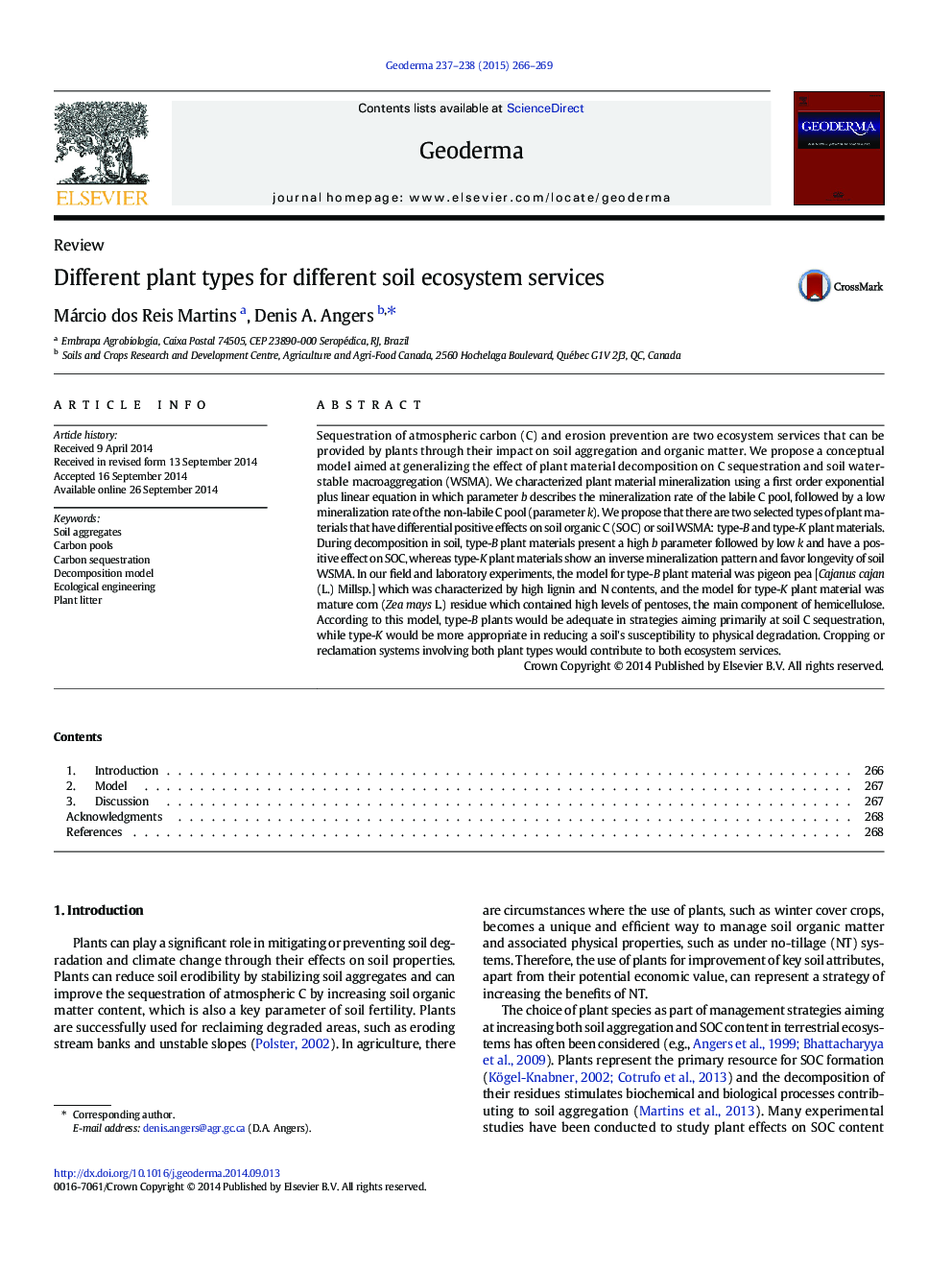| Article ID | Journal | Published Year | Pages | File Type |
|---|---|---|---|---|
| 4573290 | Geoderma | 2015 | 4 Pages |
•A conceptual model based on key biochemical attributes of plant tissue is proposed.•The model shows differential plant effects on soil organic C and aggregation.•Type-B plants are adequate in strategies aiming at soil C sequestration.•Type-K plants are appropriate in reducing the soil's susceptibility to soil erosion.•The model can be useful to design bioengineering systems based on the use of plants.
Sequestration of atmospheric carbon (C) and erosion prevention are two ecosystem services that can be provided by plants through their impact on soil aggregation and organic matter. We propose a conceptual model aimed at generalizing the effect of plant material decomposition on C sequestration and soil water-stable macroaggregation (WSMA). We characterized plant material mineralization using a first order exponential plus linear equation in which parameter b describes the mineralization rate of the labile C pool, followed by a low mineralization rate of the non-labile C pool (parameter k). We propose that there are two selected types of plant materials that have differential positive effects on soil organic C (SOC) or soil WSMA: type-B and type-K plant materials. During decomposition in soil, type-B plant materials present a high b parameter followed by low k and have a positive effect on SOC, whereas type-K plant materials show an inverse mineralization pattern and favor longevity of soil WSMA. In our field and laboratory experiments, the model for type-B plant material was pigeon pea [Cajanus cajan (L.) Millsp.] which was characterized by high lignin and N contents, and the model for type-K plant material was mature corn (Zea mays L.) residue which contained high levels of pentoses, the main component of hemicellulose. According to this model, type-B plants would be adequate in strategies aiming primarily at soil C sequestration, while type-K would be more appropriate in reducing a soil's susceptibility to physical degradation. Cropping or reclamation systems involving both plant types would contribute to both ecosystem services.
